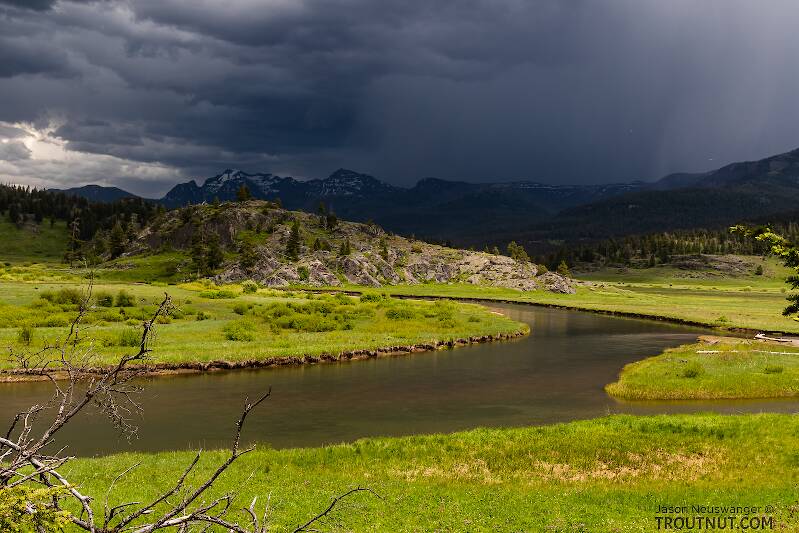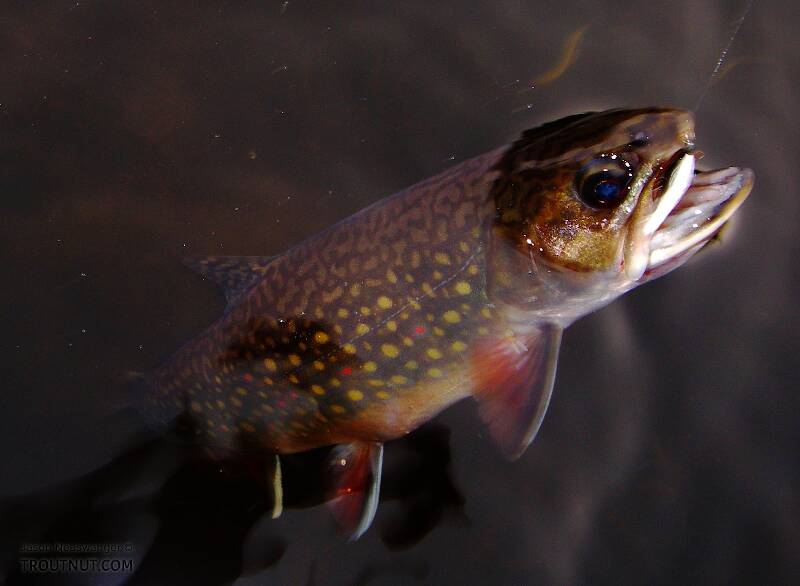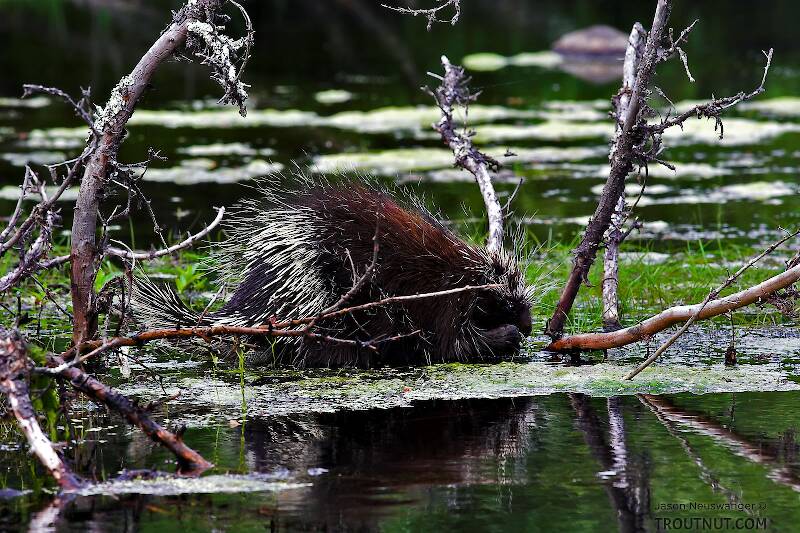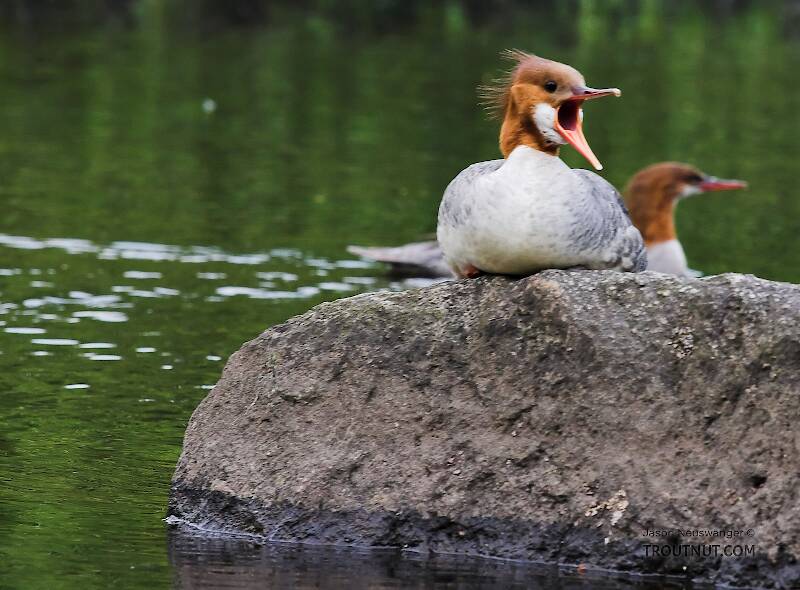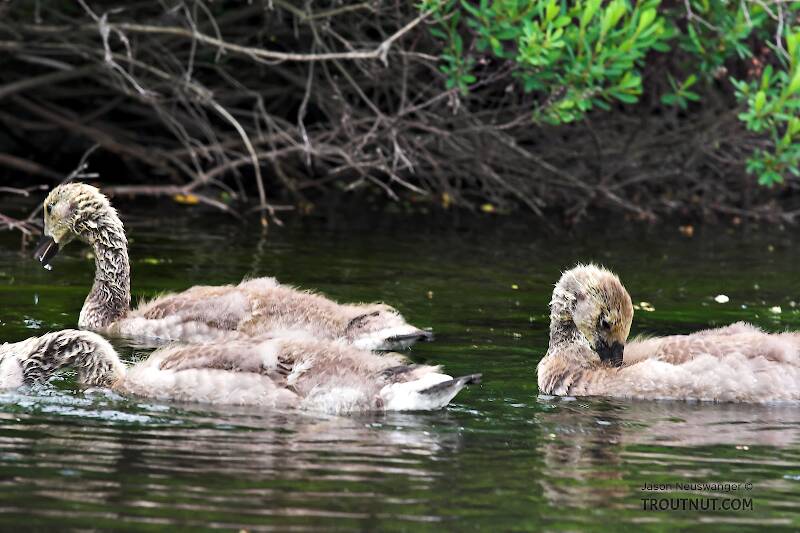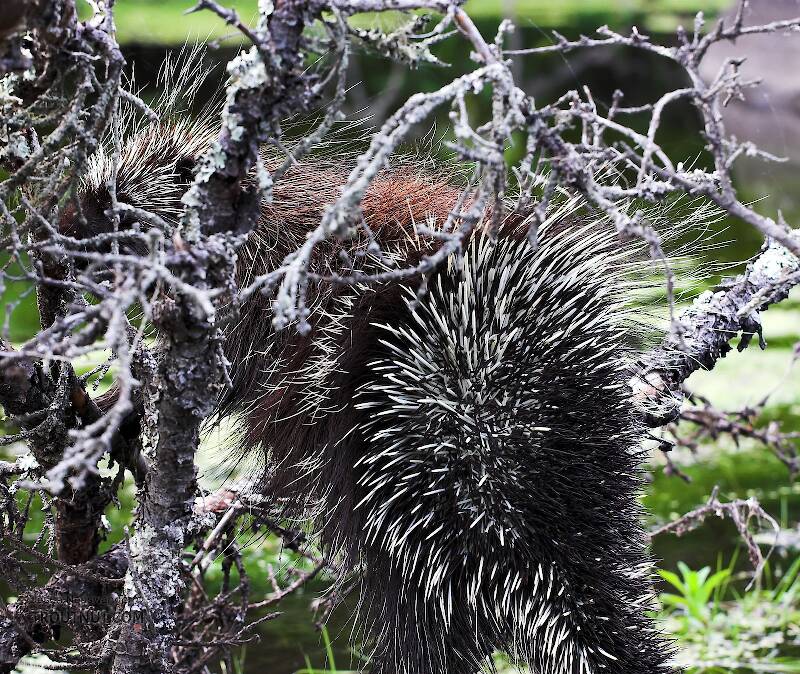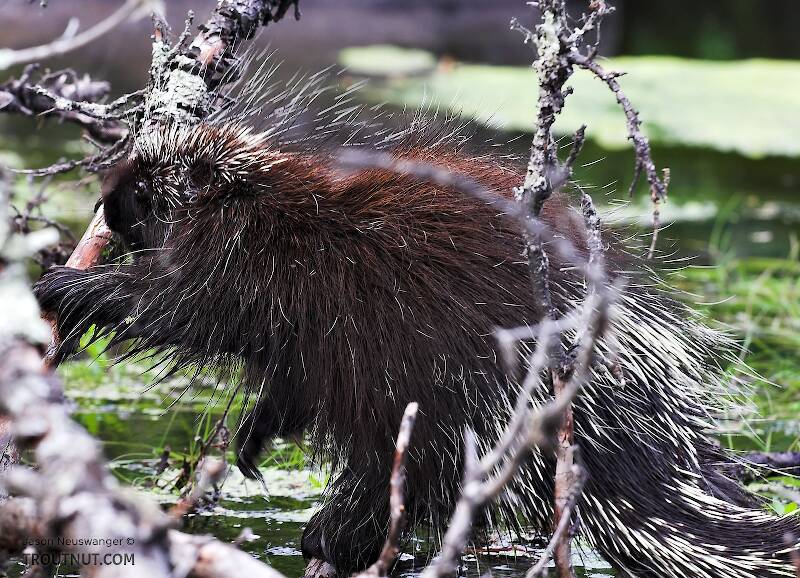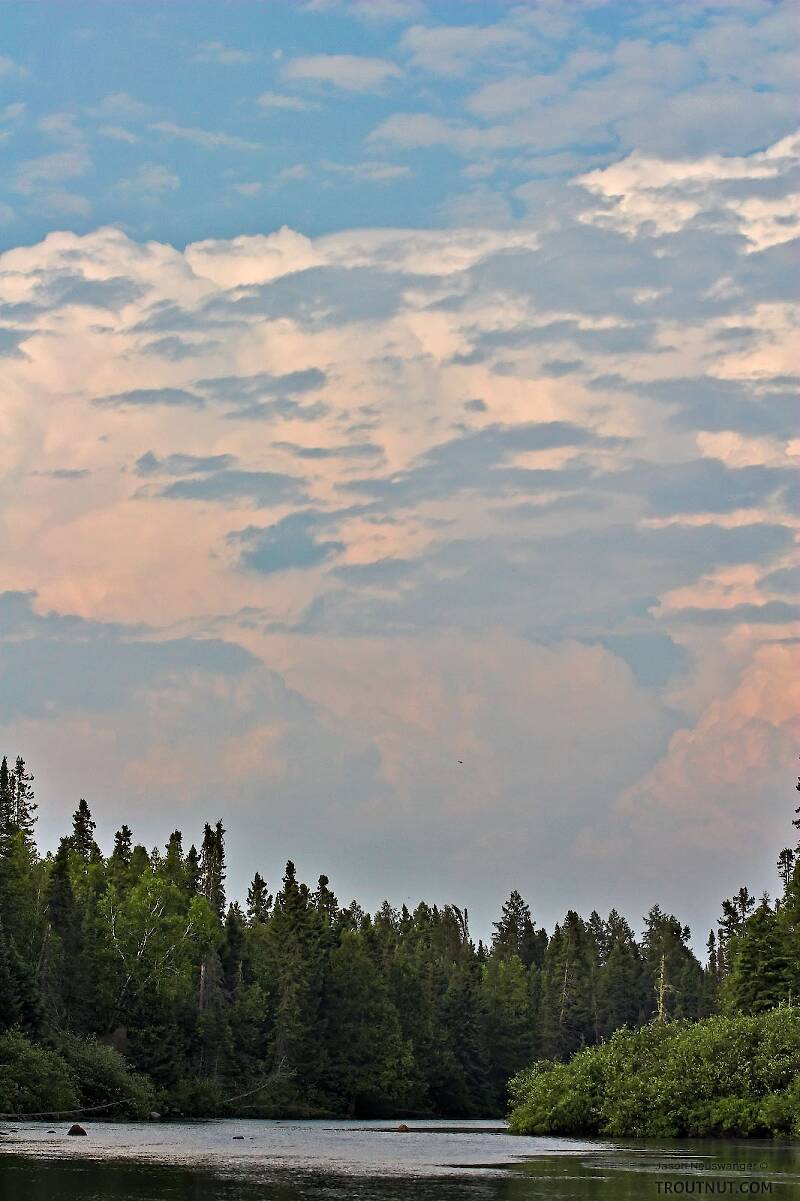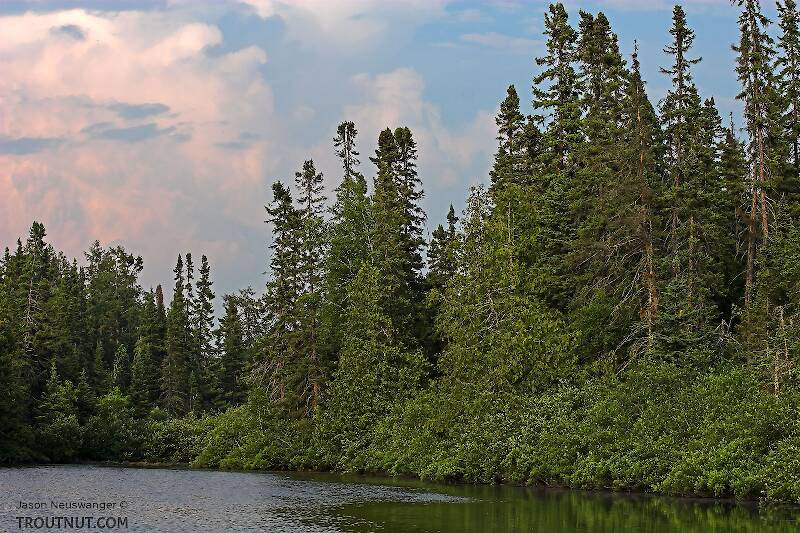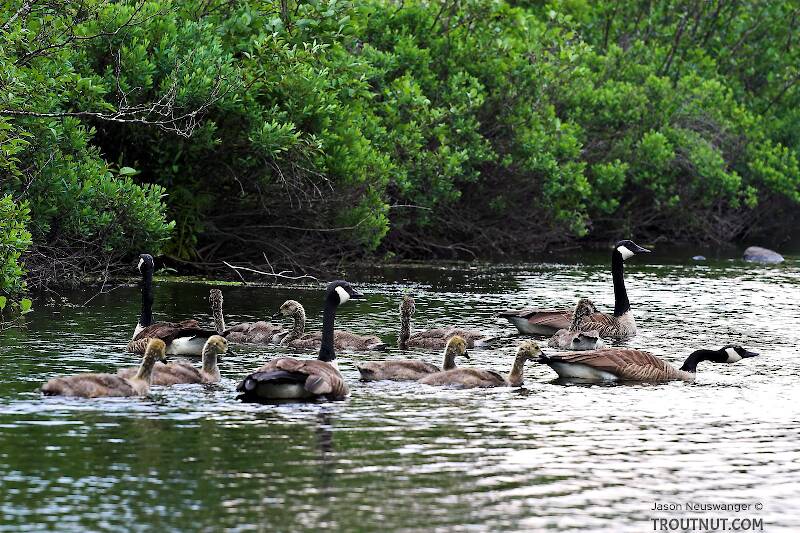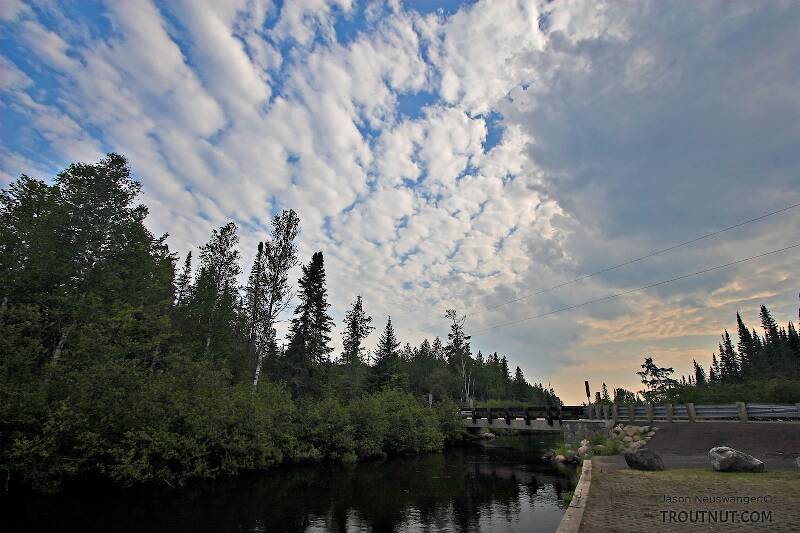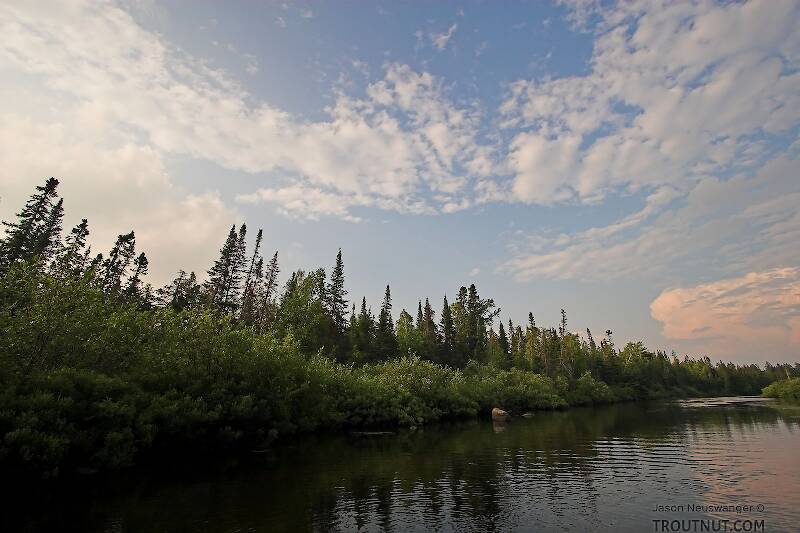
Hex Mayflies
Hexagenia limbata
The famous nocturnal Hex hatch of the Midwest (and a few other lucky locations) stirs to the surface mythically large brown trout that only touch streamers for the rest of the year.
Featured on the forum

This specimen keys to the Epeorus albertae group of species. Of the five species in that group, the two known in Washington state are Epeorus albertae and Epeorus dulciana. Of the two, albertae has been collected in vastly more locations in Washington than dulciana, suggesting it is far more common. On that basis alone I'm tentatively putting this nymph in albertae, with the large caveat that there's no real information to rule out dulciana.

Troutnut is a project started in 2003 by salmonid ecologist Jason "Troutnut" Neuswanger to help anglers and
fly tyers unabashedly embrace the entomological side of the sport. Learn more about Troutnut or
support the project for an enhanced experience here.
Updates from June 15, 2006
Updates from June 15, 2006
Quick Reply
Related Discussions
Topic
Replies
Last Reply
3
Mar 30, 2012
by Entoman
by Entoman
3
Feb 12, 2009
by Creno
by Creno
Re: Lots of new pictures to check out, coming online tonight/tomorrow
In General Discussion by Troutnut
In General Discussion by Troutnut
1
Oct 4, 2006
by Dinerobyn
by Dinerobyn
Re: hook size (and chocolate duns, and old-timey mayfly family classifications)
In Eurylophella Mayfly Nymph by Warren
In Eurylophella Mayfly Nymph by Warren
10
Apr 13, 2007
by Quillgordon
by Quillgordon

